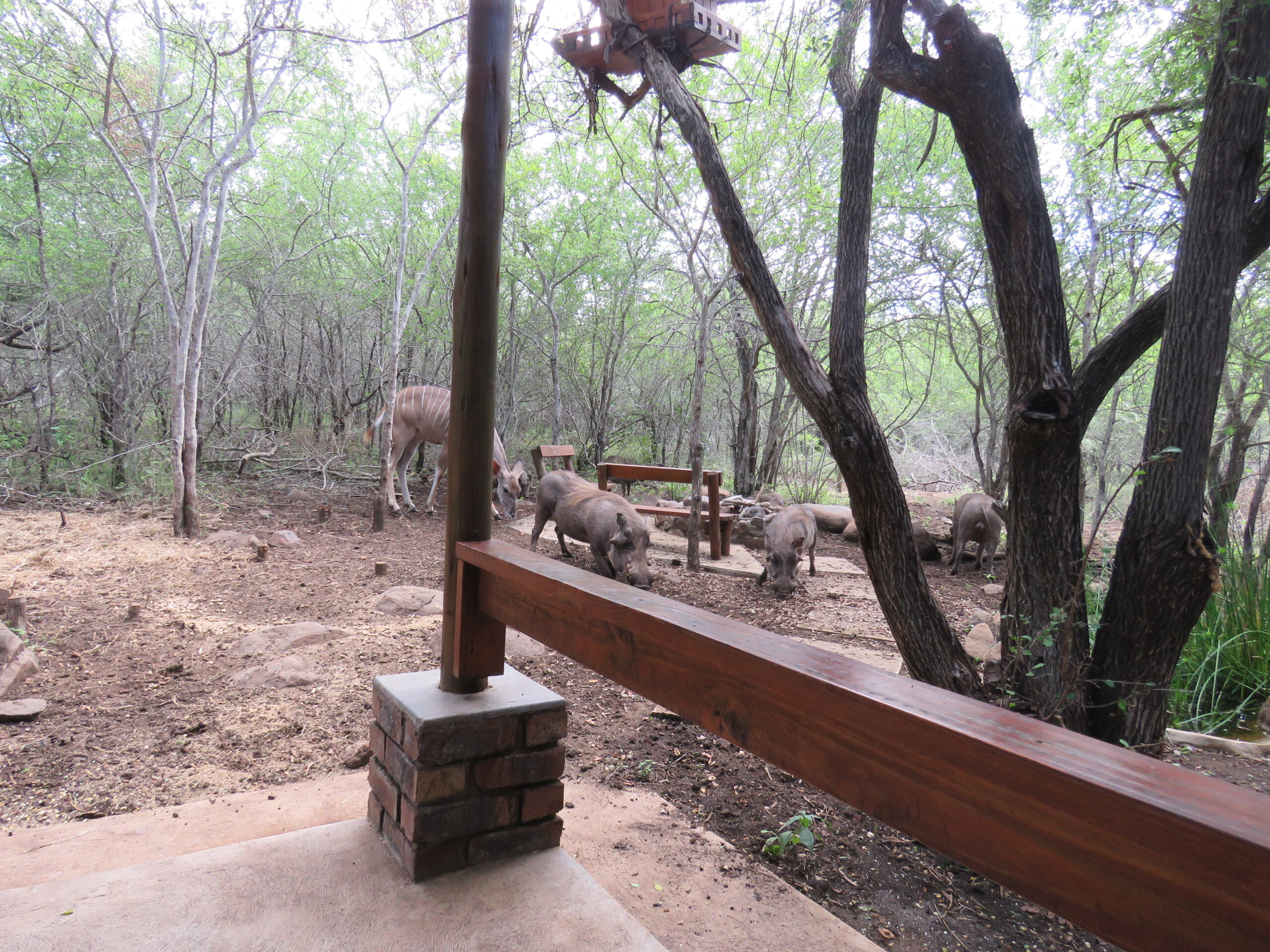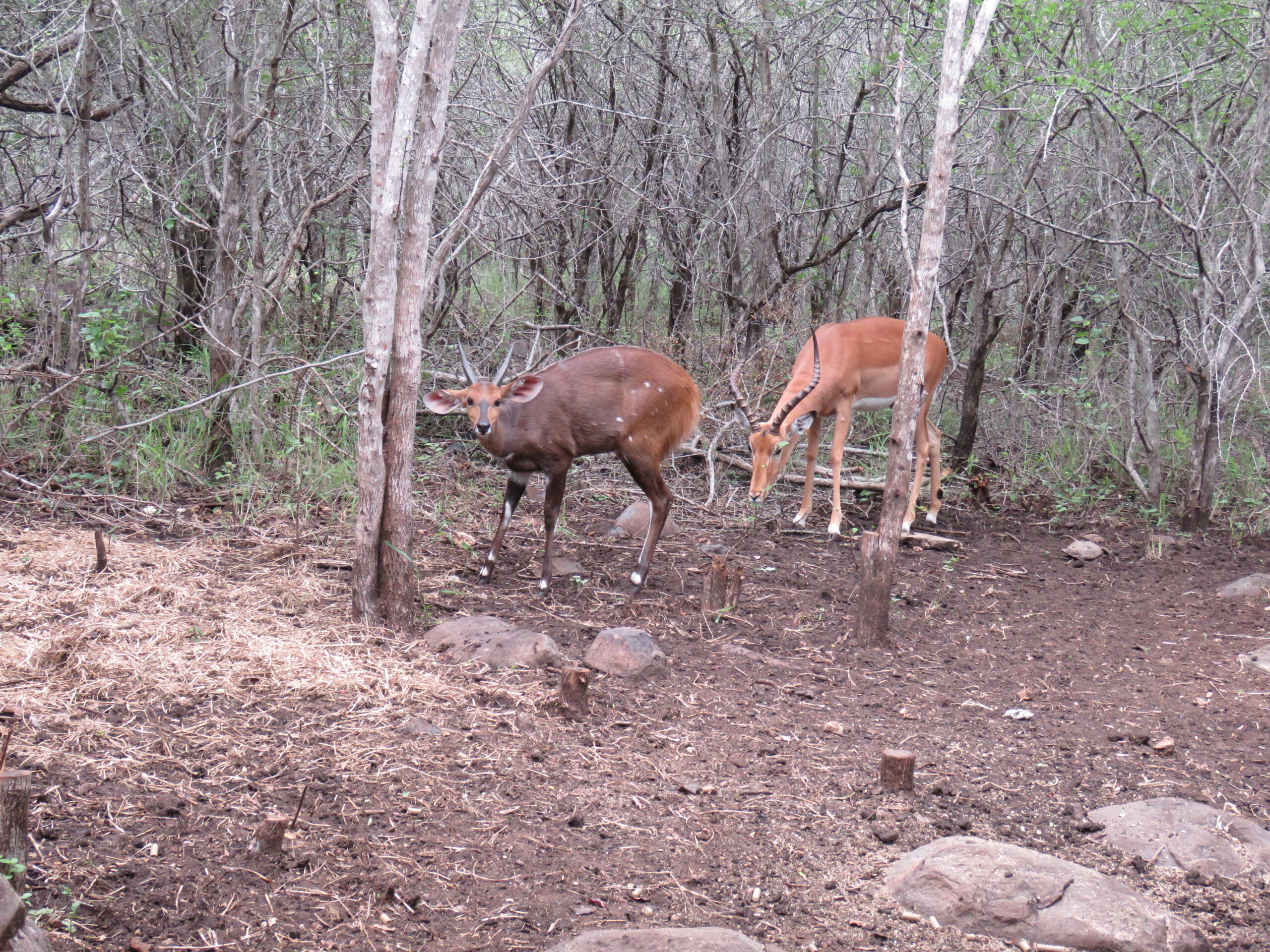
Note: The horrifying photos we posted two days ago at this post of the duiker who had an encounter with a porcupine has since been darted, treated, and released by the Marloth Park vet with the help of the rangers. She is expected to make a full recovery. We are thrilled with this news.
There are no words to describe how much fun we have every evening, whether we are with friends at their homes, out to dinner, or having sundowners or dinner guests at our place. In reality, we aren’t with friends every evening, although it may often be two or three times a week.
In our old lives in Minnesota, we most likely socialized with friends two or three times a month at most. At times, in the middle of the bitter cold and snowy winters, weeks could pass before we socialized. It wasn’t practical for us or guests to risk being on the roads at night on the dangerously icy roads with drunk or incompetent other drivers.

Once spring arrived, our house was often busy with guests, with most events held outdoors at our lovely property. But, here in South Africa, there’s no snow or icy roads, and the distance from one property to another may not be any more than a ten-minute drive.
If we didn’t drive slow to protect the wildlife crossing the roads in the dark or have the necessity of driving slow on bumpy dirt roads filled with potholes, the distances between many bush homes might well be less than ten or fifteen minutes. Thus, with the relative ease of getting to restaurants and friends’ houses, more frequent socialization is typical in the bush.
Besides, the people of South Africa are enthusiastic about getting together, whether citizens or part-time residents, as often as it makes sense for their lifestyle and preferences. For us, we rarely turn down an invitation as long as we don’t already have plans for a specific date.

We sadly had to decline on a few occasions when we were under the weather for one reason or another, such as when we both had the flu (not Covid-19) or recent painful dental work. Otherwise, we won’t hesitate to say “yes!” to most invitations to get together.
Now, with Rita and Gerhard leaving on Friday to return to their home in the US and Kathy and Don both returning to Hawaii by December, we feel fortunate to have several other friendships we’ll cultivate in their absence. Of course, we always have Friday and Saturday nights at Jabula, enjoying time with Dawn and Leon and engaging with many other locals we’ve come to know. There’s no doubt in our minds that we’ll never be bored.
During the day, we each do our own thing, although we may be in each other’s presence as we are right now situated on the veranda, working on our laptops, tossing pellets, cabbage, and carrots to our wildlife friends. This morning, we fussed over ten bushbucks and a few duikers in the garden, along with a few warthogs, Frank and the Misses, and Broken Horn.

When we don’t have plans with friends, we create our party on the veranda around 4:00 pm, 1600 hrs each evening. We sip on our beverages, whether it’s light wine for me, a cocktail for Tom, or an iced tea for both of us. We play music on our Bluetooth speaker playing songs from our distant past, feed the visiting wildlife, and chat enthusiastically, well into the evening, when we finally decide to go inside for a wonderful homemade dinner. It’s always special.
We dream about the future and reminisce over the past, our hearts filled with the many memories we’ve created. Together, over 30 years, we have never had a dull moment, as we playfully interact with one another for the remainder of the evening, laughing, smiling, and appreciating our unique quality of life.
Yes, sometimes things don’t go exactly as we’d like when illness befalls one of us, mostly me. And, no doubt, we run into obstacles of one type or another along the way. We never forget for a moment how blessed we are to be together.
May your life be fulfilling and purposeful.
Photo from one year ago today, October 12, 2020:
 |
| This photo was posted one year ago while in lockdown in a hotel in Mumbai, India, on day #203. An eland antelope, reasonably common in the Maasai Mara, posed for us in the morning sun. For more photos, please click here. |
























